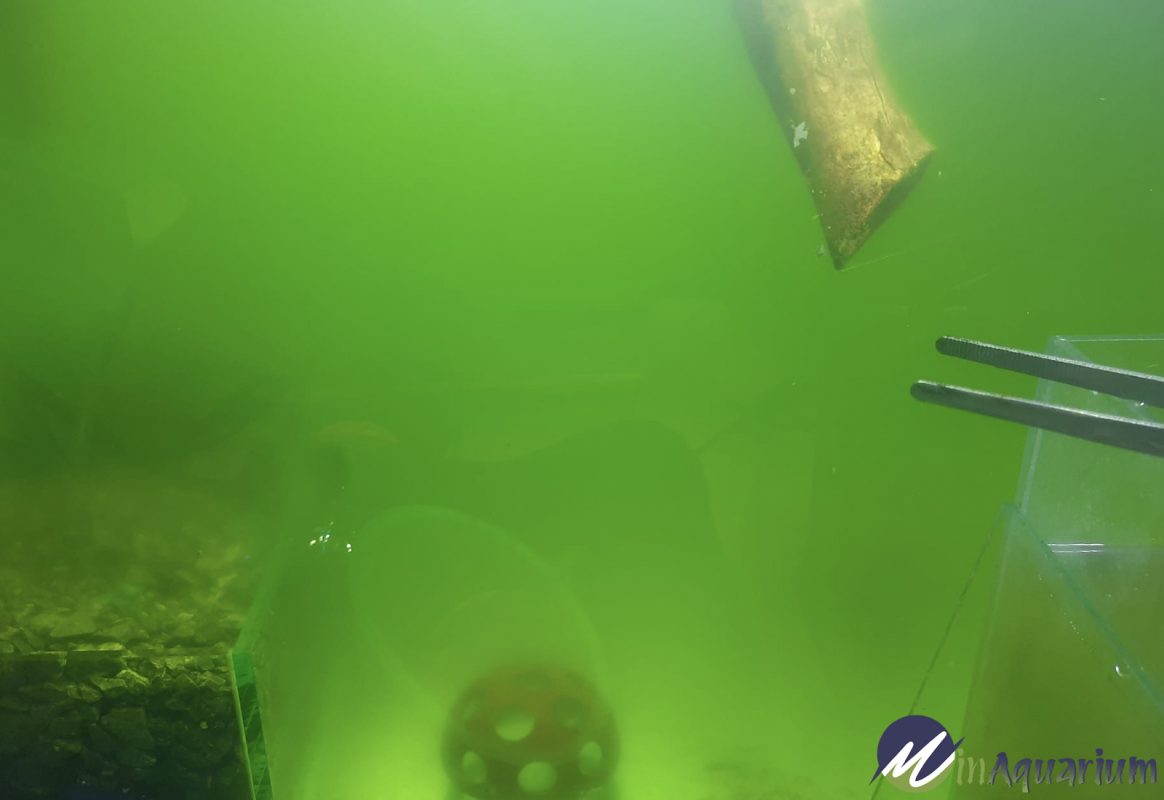Blogs
How to Eliminate Green Water in Fish Tanks: A Comprehensive Guide
As an experienced aquarist with over a decade of expertise in aquarium maintenance, I have witnessed firsthand the frustrations associated with green water. This prevalent issue can compromise the health and aesthetics of your aquarium ecosystem. In this article, I will delve into the underlying causes of green water and provide a comprehensive guide to help you effectively resolve it, ensuring a thriving and visually appealing aquatic environment.
Introduction
Green water in fish tanks, characterized by a cloudy, greenish hue, is a common challenge faced by aquarists. Understanding the causes and employing effective solutions are crucial for restoring water clarity and maintaining a healthy ecosystem.
Understanding the Causes of Green Water
- Overpopulation of Phytoplankton: Green water is caused by an excessive proliferation of phytoplankton, microscopic floating algae that thrive in nutrient-rich water conditions.
- Excessive Light Exposure: Intense or prolonged lighting can stimulate the rapid growth of phytoplankton.
- Abundance of Nutrients: Excess nutrients in the water column, such as phosphates and nitrates, provide sustenance for phytoplankton.
- Overfeeding: Feeding your fish in excess can contribute to nutrient buildup and fuel phytoplankton growth.
- Overstocking: A tank with too many fish can lead to increased organic waste and nutrient pollution, exacerbating green water.
- Inadequate Aquarium Maintenance: Skipping regular water changes, neglecting filter cleaning, and failing to remove debris can promote phytoplankton growth.
Comprehensive Strategies for Eliminating Green Water
1. Black-Out Method
- Cover the Tank: Turn off all lights and cover the entire aquarium with a dark-colored blanket to deprive phytoplankton of light.
- Duration: Maintain the black-out for a maximum of seven days to ensure phytoplankton depletion.
2. UV Sterilization
- UV Sterilizer: Employ a UV sterilizer to kill algae and other microorganisms using ultraviolet light.
- Control Outbreak: UV sterilization can effectively control green water outbreaks and prevent recurrence.
3. Water Changes
- Nutrient Reduction: While large water changes alone may not eliminate green water, they help reduce nutrient levels in the water column.
- Frequency: Perform partial water changes regularly, typically around 20-30%, to remove excess nutrients.
4. Controlled Light Exposure
- Natural Light: Manage lighting schedules to mimic a natural day-night cycle. Avoid excessive exposure to direct sunlight.
- Artificial Lighting: Utilize a timer for artificial lighting to control the duration and intensity of light.
5. Plant Addition
- Nutrient Competition: Introduce live aquarium plants to compete with phytoplankton for light and nutrients.
- Biological Balance: Healthy plants contribute to the overall biological equilibrium of the aquarium and suppress phytoplankton growth.
6. Regular Aquarium Maintenance
- Filter Cleaning: Regularly clean the aquarium filter to remove debris and prevent nutrient accumulation.
- Water Testing: Test water parameters routinely to monitor nutrient levels and adjust maintenance accordingly.
- Waste Removal: Perform gravel vacuuming to remove excess waste and debris that could fuel phytoplankton growth.
Preventing Green Water Recurrence
- Balanced Ecosystem: Maintain a balanced ecosystem by addressing factors such as light exposure, nutrient levels, and proper aquarium care.
- Regular Maintenance: Adhere to a regular maintenance schedule to prevent nutrient buildup and minimize the risk of green water.
- Quarantine New Introductions: Quarantine new fish and plants before adding them to the main tank to prevent the introduction of phytoplankton.
Frequently Asked Questions
- What is the primary cause of green water in fish tanks?
- Green water is primarily caused by an overpopulation of phytoplankton, microscopic algae that thrive in nutrient-rich water conditions.
- Which method is most effective for eliminating green water, and why?
- The most effective method depends on the severity and underlying cause of green water. For acute outbreaks, the black-out method can quickly reduce phytoplankton population. UV sterilization provides a long-term solution by continuously killing algae. A combination of approaches may be necessary.
- How often should I perform water changes to prevent green water recurrence?
- Regular water changes are essential for nutrient control. The frequency depends on the tank size, stocking level, and feeding habits. Typically, weekly or bi-weekly partial water changes of around 20-30% are recommended.
- What types of live plants are effective in combating green water?
- Fast-growing plants, such as hornwort, duckweed, and water sprite, are particularly efficient in nutrient uptake and can outcompete phytoplankton.
- Is it safe to use algae-killing chemicals in fish tanks?
- Algae-killing chemicals should be used with caution, as they can harm fish and other aquatic organisms. Natural methods, such as the black-out method or UV sterilization, are generally safer and more sustainable.
Conclusion
Green water in fish tanks can be effectively eliminated and prevented by understanding the underlying causes and implementing tailored solutions. By employing a combination of techniques, such as the black-out method, UV sterilization, and regular aquarium maintenance, you can restore water clarity and maintain a healthy ecosystem. Additionally, adhering to proactive measures, such as balanced lighting schedules, nutrient control, and the introduction of live plants, will help prevent green water recurrence, ensuring a thriving and visually appealing aquatic environment for your fish and plants.
Key Takeaways:
- Green water is caused by excessive phytoplankton growth due to nutrient-rich water conditions and excessive light exposure.
- The black-out method and UV sterilization are effective in eliminating green water.
- Regular aquarium maintenance, including water changes, filter cleaning, and waste removal, prevents nutrient buildup and phytoplankton proliferation.
- Live plants compete with phytoplankton for nutrients and contribute to biological balance.
- A balanced ecosystem and proper aquarium care are essential for preventing green water recurrence.

